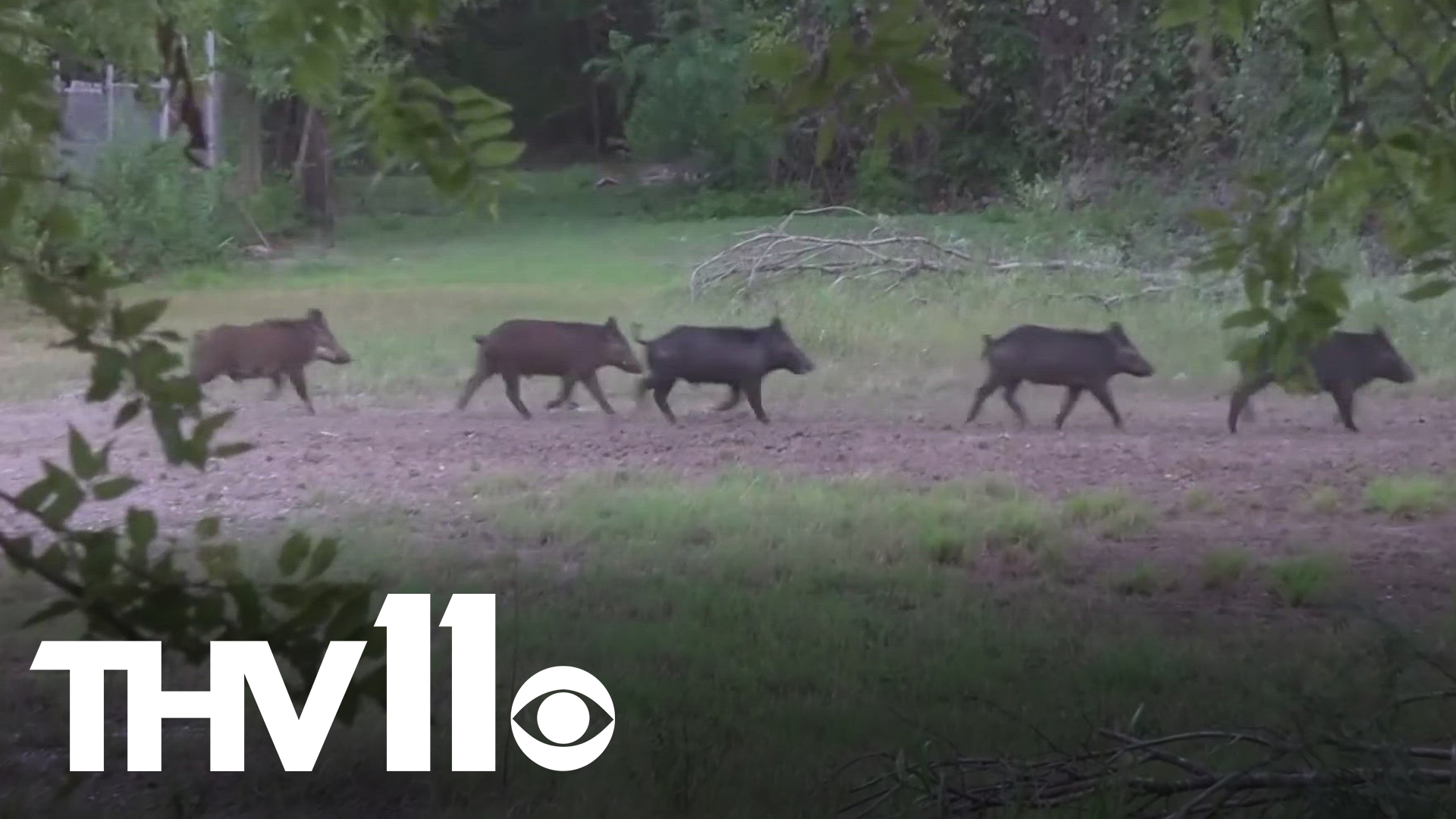GURDON, Ark. — Last week, some residents in Gurdon woke up and were shocked to find damage that had been left behind by a nuisance they were not used to seeing— feral hogs.
"There have never been wild hogs in Gurdon, Arkansas," said Jerry Hawley, a Gurdon resident. "I've lived here 14 years, and I've spoken with residents who have been here their entire life, and they have never been here."
Hawley is one of a few homeowners in town who have been living through an inconvenience that no one wants to have to deal with. Just days ago, Hawley said he noticed that his yard had been rooted up by feral hogs.
In the state of Arkansas, feral hogs are considered to be at least somewhat of a problem for all landowners.
The Arkansas Game and Fish Commission classifies them as an invasive species and says that they compete for food resources, destroy habitats by rooting and wallowing, eat ground-nesting birds, eggs, fawns, and young domestic livestock, and carry up to 45 diseases.
"I had minimal damage a little bit up on the ditch edge and very little down there in the other part of the yard. But as the days continue, they have done more damage, taking over a good portion of that backyard," Hawley described.
Feral hogs typically cause damage with their snouts as they search for food and more. They can also travel in large familial groups of 30 or more pigs, also called sounders.
Hawley believes the hogs have been finding their way into the yards of many due to clear cutting, dry weather, and prolific breeding— causing damage to many local residences including the local cemetery in Gurdon.
"What they do is their front leg has basically one knuckle. They bend that knuckle down, lay that on the ground, and then they go down, and that's when they use their snout to do all their devastation. Digging for grubs and roots and whatever they're looking for to feed on," he described.
When it comes to cleaning up the damage, it can cost thousands to not only get landscaping back to normal but also hire a local hunter who will utilize legal trapping techniques to remove the feral hogs for good from the area.
Residents like Hawley, are worried about one thing in spite of these solutions— will they keep coming back?
The Arkansas Department of Agriculture (ADA) has initiated the Feral Hog Eradication Task Force. Through this, they provide Arkansans like Hawley with solutions to remove the public nuisance.
Ryan Farney, the Feral Hog Program Coordinator explained how a mistake that many people make when dealing with wild hogs is not getting in touch with the right people.
"The first call that we want people to make is to USDA, and they will have somebody out as soon as possible to help set up a trap. Those services are free of charge," Farney said. "If USDA is in a position where they can't come out in a timely manner, then sometimes Arkansas Game and Fish Commission will come and and help those landowners as well.
The goal of the task force is to eradicate feral hogs so towns like Gurdon are not left with the burden of costly damage and disturbances— ensuring that natural resources and native wildlife are protected.
If you or anyone you know is dealing with a feral hog problem, you can call the USDA at (501) 835-2318.
For more information on feral hogs in Arkansas, please click here.

